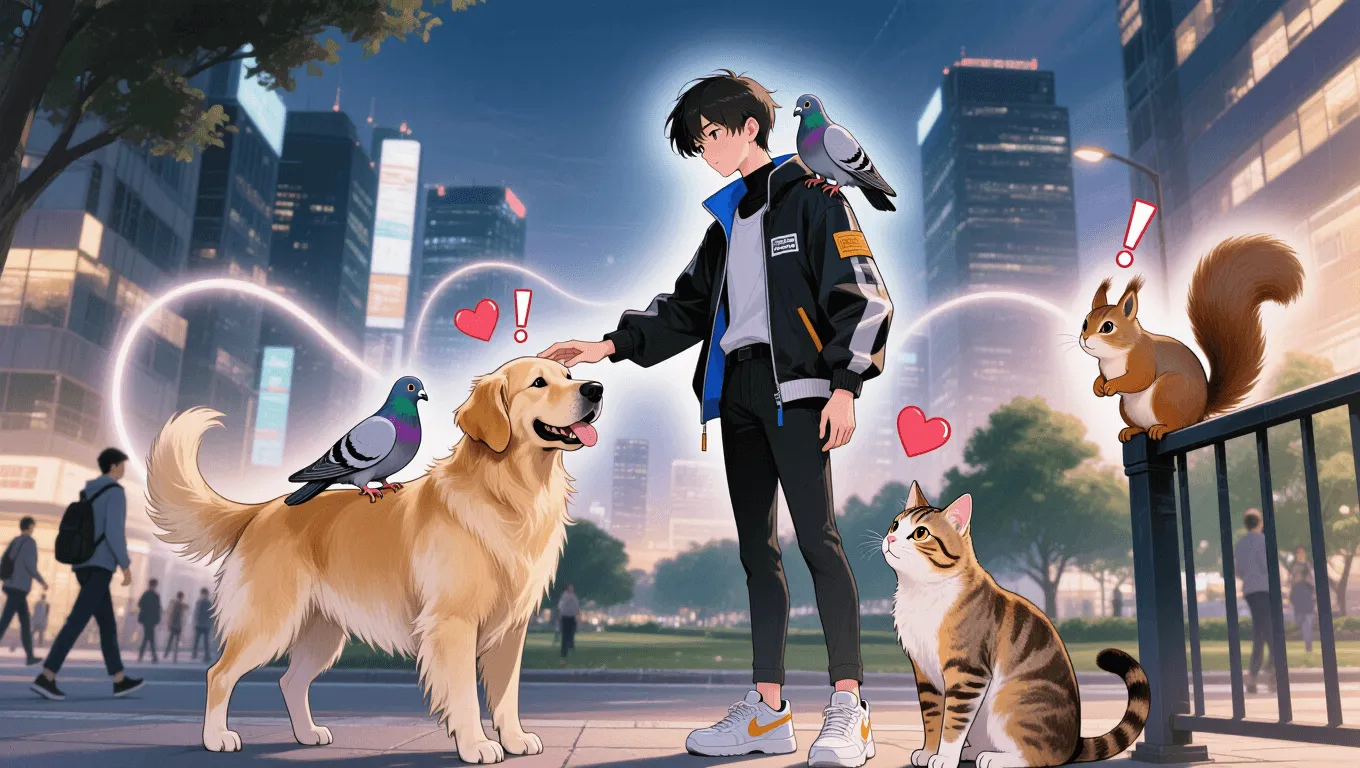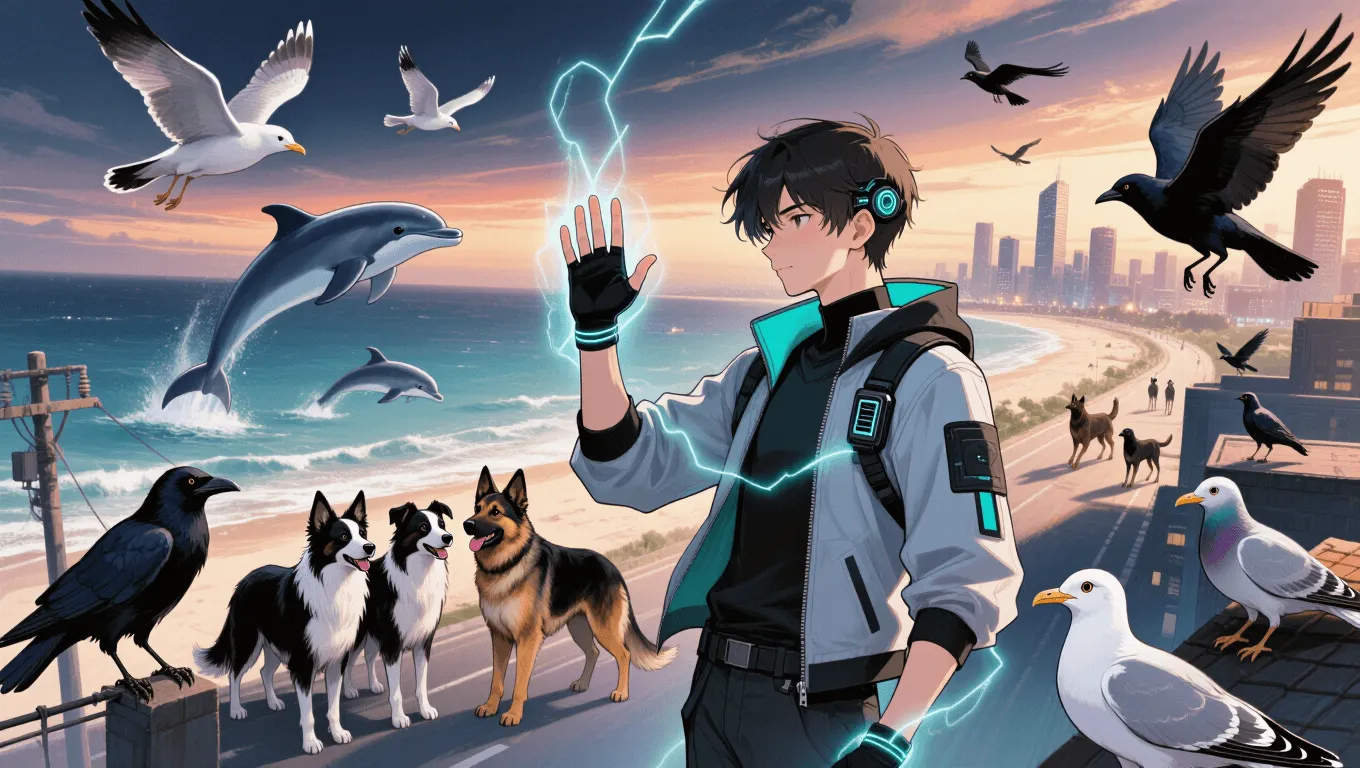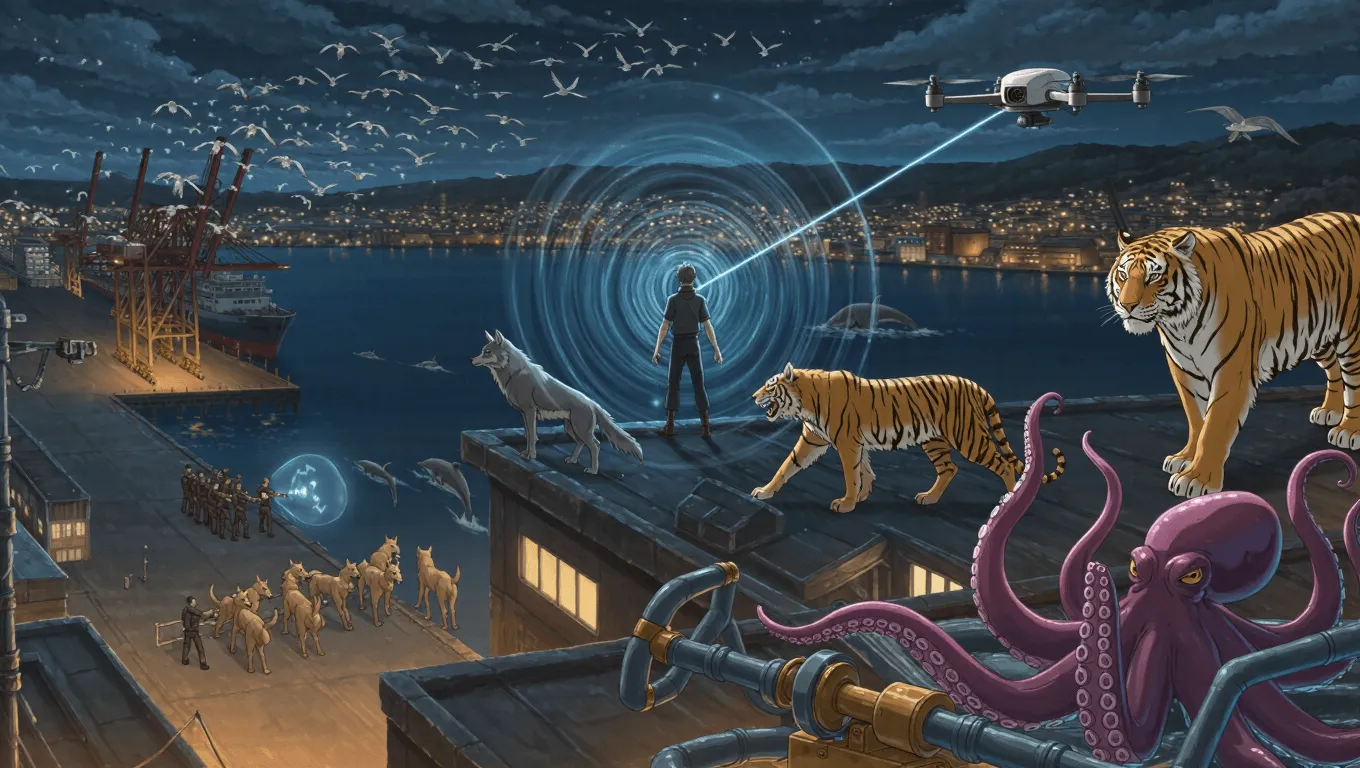Animal Telepathy (Zoopathy) Superpower Guide

Animal Telepathy Video Demo 🎬
Table of Contents
- Animal Telepathy Video Demo 🎬
- What Is Animal Telepathy
- Core Abilities of Animal Telepathy
- Application / Tactical Advantages in Combat
- Level: Level 1 🏙️, Level 2 🌇, Level 3 🌃
- Limitations of Using the Animal Telepathy
- Weakness Against What Other Superpowers
- Synergistic Power Combos
- Known Users
- Additional Keywords and Concepts
Animal telepathy is the superpower of forming a direct mental link with animals to exchange thoughts, emotions, and intentions—no spoken words required. As a specialized branch of telepathic communication, it enables animal communication, empathy, and command while respecting a creature’s natural instincts. This entry explores how the gift functions, the tactical advantages it creates, and the limits that keep it balanced in stories and games. For more related entries, visit the evolving superpower wiki, or discover a new ability at random with the random superpower generator.
What Is Animal Telepathy
Animal telepathy—also known as zoopathy, beast whispering, or mind-to-animal link—is the capacity to interface with an animal’s psyche and exchange meaning in its native mental “language.” Rather than decoding verbal speech, the user receives sense-rich packets: images, scent-anchored memories, emotional colors, and instinctive urges. In return, the user transmits clear intentions the animal can grasp—directional cues, safety signals, relational trust, or mission goals that align with the creature’s behavior patterns.
Unlike brute-force mind control, animal telepathy is most effective when it honors consent and builds rapport. Trust multiplies clarity. Over time, users often develop species affinities—avian telepathy for raptors, marine telepathy for dolphins and whales, urban wildlife diplomacy with corvids, raccoons, or rats. With mastery, the link scales from a single bond to a coordinated multi-species web.
Core Abilities of Animal Telepathy
Two-Way Thought Exchange
The baseline skill is a bidirectional channel where the user “listens” to feelings and snapshots while “speaking” in intention, direction, and mood. This bypasses language barriers and reduces misunderstandings common to body-language training.
Emotional Regulation and Pacification
By projecting calm, reassurance, and safety, the user can defuse aggression, halt a charge, or redirect a startled herd. This is invaluable in crowd control, conservation work, and high-stress rescue missions.
Sense Borrowing (Remote Perception)
The user can borrow or blend sensory streams: eagle-eye telescopic vision, bat echolocation, shark electroreception, hound-level olfaction, or octopus texture mapping. This creates a flexible scouting system that thrives where cameras fail.
Group Guidance and Swarm Coordination
Beyond single allies, an adept can guide flocks, packs, pods, or swarms with formation cues, waypoint chains, and timing pulses. Think “conductor of the wild orchestra,” shaping movement without crushing free will.
Memory Imprint & Trail Reconstruction
Animals encode events as multimodal memories—smell routes, motion rhythms, sky silhouettes, stress spikes. The user assembles these fragments into a usable reconstruction for tracking, forensics, or search-and-rescue.
Status Pings and Pain Dampening
Linked companions can send “pings” when injured or alarmed. The user can return comfort signals to reduce panic and pain, helping stabilize creatures until medical support arrives.
Species Specialization & Ecosystem Networking
Focus improves results. A marine-focused user might tap migratory networks for long-range relays, while an urban specialist builds rooftop crow couriers and alley-dog early warnings.
Application / Tactical Advantages in Combat
Silent Recon and Counter-Stealth
A dispersed net of birds, insects, or small mammals forms a living early-warning grid. Cloaks, stealth suits, and low-IR intruders still betray themselves to a bloodhound’s nose or a bat’s sonar. The user aggregates these feeds into a reliable threat picture without radio chatter.
Terrain Denial and Harassment
Bees, wasps, and gulls disrupt visibility and precision. Sea lions clog underwater approaches. Feral dogs or wolves harry flanks, forcing enemies into predictable lanes. None of this requires lethal force; it’s misdirection, delay, and attrition by nature.
Precision Distraction for Openings
A hawk stoop, a sudden rat swarm, or a chorus of crows splits focus at critical moments—perfect for disarms, evacuations, or gadget grabs. The best operators time these cues to the heartbeat of their team’s maneuver.
Non-Lethal Neutralization
Spiders’ webs, tangling kelp, and coordinated bird flocks can disable sensors, snag gear, or overwhelm targeting systems without harming opponents. This aligns with codes of non-lethality that many heroes uphold.
Rapid Search and Rescue
Dogs, dolphins, and crows sweep grids faster than humans. The user assigns parcels, receives live pings, and fuses data into a dynamic map—locating survivors, flagging hazards, and guiding medics efficiently.
Environmental Intelligence
Linked animals report changing currents, shifting wind, ground tremors, and toxin scents long before instruments update. This anticipatory edge prevents ambushes and navigates teams around invisible risks.
Level: Level 1 🏙️, Level 2 🌇, Level 3 🌃
Level 1 🏙️ — Animal Whisperer Initiate

-
Range: A few meters; eye contact or touch helps establish the link.
-
Signal Clarity: Emotional tones and simple commands: follow, hide, safe, danger.
-
Influence: Works best with domesticated animals and calm wildlife.
-
Senses: Brief flashes—single images, a distinctive smell, a sound snapshot.
-
Typical Use: Neighborhood patrols, calming strays, basic scouting via birds or pets.
-
Common Pitfall: Overwhelm in noisy environments—too many signals at once.
Level 2 🌇 — Skilled Zoopath

-
Range: Dozens to hundreds of meters; line-of-sight not always necessary once bonded.
-
Signal Clarity: Simple plans with cause-and-effect (“circle left, then call”).
-
Influence: Reliable guidance for social species—canines, corvids, dolphins.
-
Senses: Sustained sharing; practical tracking and aerial reconnaissance.
-
Tactics: Perimeter alarms, corridor herding, synchronized distractions.
-
Typical Use: Coastal interdiction with dolphins and gulls; urban surveillance with pigeons and crows.
Level 3 🌃 — Apex Animal Telepath

-
Range: City blocks to kilometers via relay networks (migratory paths, pod bonds).
-
Signal Clarity: Complex multi-species operations, contingency branches, time-synced cues.
-
Influence: Ethical command that respects limits; can pacify apex predators when essential.
-
Senses: Sensor fusion—stacked inputs (vision, scent, sonar) into a cohesive battlespace map.
-
Tactics: Drone-blind flocks, underwater gear sabotage by octopi, non-lethal mob control.
-
Typical Use: Night harbor raids, disaster megasite coordination, counter-infiltration grids.
Limitations of Using the Animal Telepathy
Biological Scope
The link targets animals—organisms with instinct and sensation akin to Earth fauna. It fails on machines, most constructs, and purely synthetic minds without animal-like drives.
Consent and Stress Load
Frightened or tortured animals broadcast chaotic signals. Forcing control undercuts trust and can trigger resistance or trauma. Ethical users de-escalate first, then coordinate.
Cognitive Ceiling by Species
Concepts must be translated into the animal’s mental toolkit: scent maps for dogs, sky shapes for birds, vibration patterns for insects. Abstract logic has limited mileage outside corvids, cetaceans, and primates.
Environmental Noise
Large colonies, storm EM interference, sonar-saturated bays, or dense urban ecosystems create mental “static.” The user must filter aggressively or narrow the network.
Human Limits
Sustaining multiple links drains focus, causing sensory ghosting or nausea when bonds break suddenly. Overextension is the fastest path to critical mistakes.
Legal and Ethical Boundaries
Weaponizing protected species, pushing animals into lethal risk, or disrupting breeding grounds crosses moral and legal lines. Responsible users coordinate with conservation and veterinary teams.
Weakness Against What Other Superpowers
Psionic Shields and Jammers
Telepathic dampeners, psi-null zones, and anti-psi fields reduce clarity or sever links. Foes with mental shielding can move through animal nets undetected.
Fear Induction and Rage Amplification
Terror auras and frenzy fields override calm cues, scattering flocks and panicking herds. Pacification becomes costly and unreliable.
Sonic Warfare and Frequency Floods
High-intensity sonics disorient bats, dolphins, birds, and even canines, collapsing sense-sharing and coordination.
Elemental Area Denial
Wildfire, toxic fogs, electrified water, or blizzard walls keep animals at bay. Without creatures present, terrain control strategies vanish.
Technopathy and Autonomous Drones
Machine swarms ignore instinctual cues and can outmaneuver birds with anti-collision logic, forcing the telepath to switch from animal-led denial to creative cover and timing.
Synergistic Power Combos
General Telepathy or Empathy
Human-to-human telepathy filters noise and sharpens intent packets. Empathy refines pacification, making delicate rescues smoother and safer.
Beast Mastery / Animal Enhancement
Augmenting durability, speed, or stamina elevates coordinated teams: avalanche rescue dogs with cold resistance, armored rhinos for barricade-breaking (used responsibly).
Nature Manipulation and Weather Control
Guiding birds along tailwinds or fish with currents creates “conveyor belts” of motion. Terrain shaping plus animal telepathy yields elegant, low-visibility logistics.
Illusion Crafting
Projected scents, phantom calls, or visual lures steer animals into ambush-free paths and mislead foes simultaneously.
Healing / Regeneration
Field medics who share pain-dampening can stabilize injured companions, maintain morale, and keep critical links online.
Stealth, Parkour, and Acrobatics
Animal distractions plus rooftop mobility make infiltration and escape nearly frictionless—think crow lookouts, cat-led alley routes, and bat-timed crossings.
Known Users
-
Aquaman (DC Comics) — A classic marine commander whose rapport with sea life exemplifies ethical large-scale coordination. Learn more about Aquaman.
-
Squirrel Girl (Marvel Comics) — Turns small allies into strategic assets with charm, wit, and smart coordination. Explore Squirrel Girl.
-
Animal Man (DC Comics) — While famed for channeling abilities, he demonstrates deep empathic links and interspecies understanding. Read about Animal Man.
-
Tarzan (Literature/Film) — Interpreted in many versions with heightened animal rapport and jungle coordination. See Tarzan’s adaptations.
Additional Keywords and Concepts
Alternate Terms
Zoopathy, beast whisperer, animal communion, animal empathy, animal command, pack bond, swarm coordination, avian telepathy, marine telepathy.
Training Pathways
-
Bond First: Build a stable, trusted link with one animal; scale gradually to groups.
-
Species Focus: Start with a niche (raptors, canines, cetaceans) to hone speed, range, and clarity.
-
Signal Hygiene: Use simple mental images and end each exchange with a clean “done” signal to prevent lingering anxiety.
-
Conservation Partnership: Pair with rangers, vets, and rescue orgs to create sustainable networks of willing helpers.
Everyday Uses Beyond Combat
-
Wildlife Rescue: Stress-minimized captures, reunification of young with parents, safer relocations.
-
Agriculture: Humane herding, pollinator support through reassurance cues, non-lethal pest redirection.
-
Urban Safety: Defusing human–animal conflict, guiding safe road crossings, calming panicked strays.
-
Research: Ethically observing behavior via consent-based memory snapshots and real-time emotional readouts.
-
Therapy & Companionship: Deepening bonds with service animals for improved outcomes in therapy settings.
Readers can continue exploring related abilities in our comprehensive superpower wiki or spin up a surprise idea with the random superpower generator.
